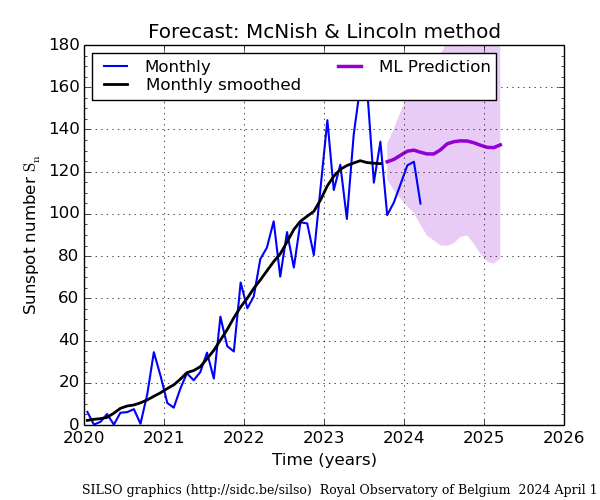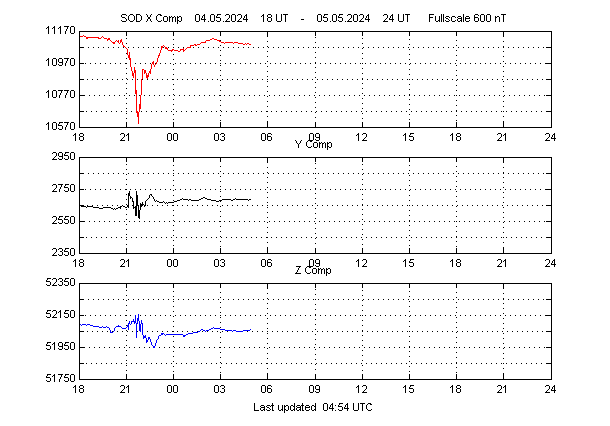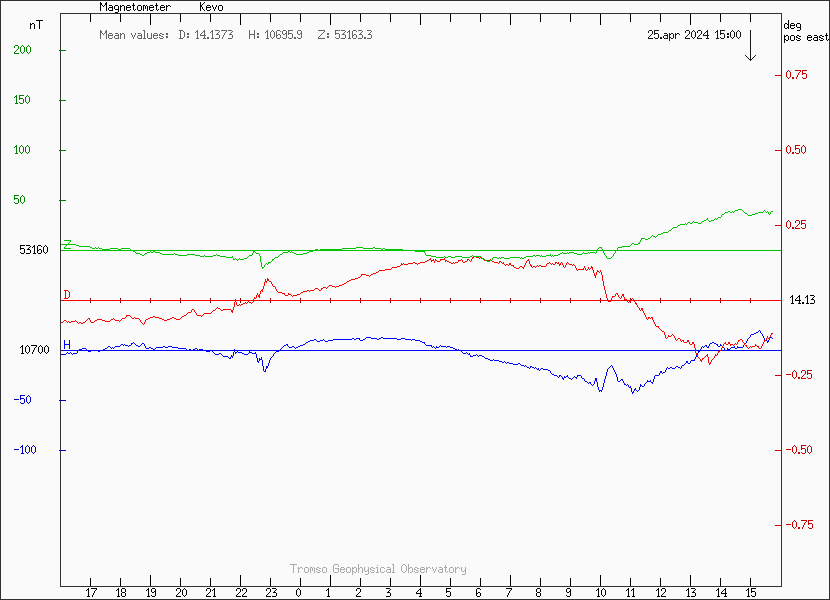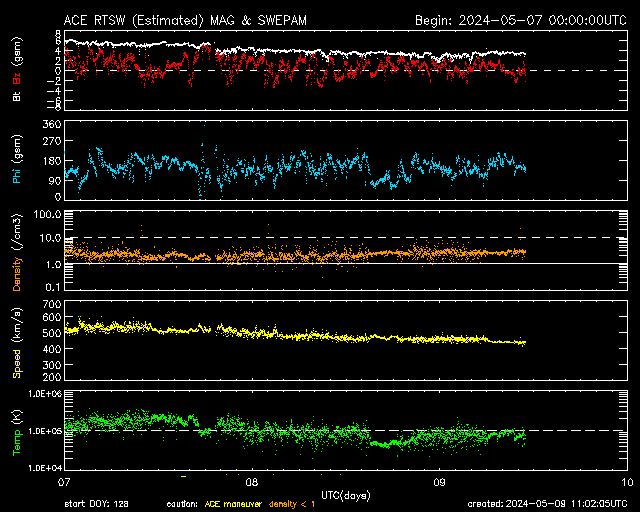Space Weather on 2 May 2024, 19:50 UTC
SN 87 | SFI 135 | Kp 9 | Ap 77 | Kt 5 | At 21 | Bz 5.5 | Dst | XRY 1.00 | Pf 0.2 | SW 441
Sunspot Numbers for VOACAP
The SSN source of (near-)current sunspot numbers to be used with VOACAP: SIDC (Belgium).

Real-Time K-Index
A 3-hourly index of geomagnetic activity expressed in the logarithmic units on a scale from 0 to 9.

Source: https://flux.phys.uit.no/Kindice/k_tro2a.gif (Tromso Geophysical Observatory)
Magnetogram: State of Earth's Magnetic Field
Variations in Earth's magnetic field are measured by magnetometers. Any strong and sudden variations (up or down) in the X component (uppermost graph) are indications of VHF radio-auroral activity (e.g. on 144 MHz when variations suddenly peak, say, 300 nT).
<
Source: https://www.sgo.fi/Data/RealTime/Kuvat/magrtday.png (Sodankylä Geophysical Observatory)

Source: https://flux.phys.uit.no/Last24/Last24_kev1a.gif, (Utsjoki/Kevo)
Real-Time Solar Wind

Source: https://services.swpc.noaa.gov/images/ace-mag-swepam-3-day.gif (NOAA, Space Environment Prediction Center)
Solar X-Ray Flux
Class M and X flares affect the sunlit area of the Earth, causing increased D-region absorption. Strong flares are source of Shortwave Fadeouts (SWF) and Sudden Ionospheric Disturbances (SID).
See GOES X-Ray Flux (NOAA Space Weather Prediction Center)
Solar Proton Flux
High-energy protons are guided into the polar cap by Earth's magnetic field. Strong proton bursts are source of Polar Cap Absorption (PCA), i.e. high D-region absorption on paths passing through the polar areas.
See GOES Proton Flux (NOAA Space Weather Prediction Center)

Source: https://services.swpc.noaa.gov/images/swx-overview-small.gif